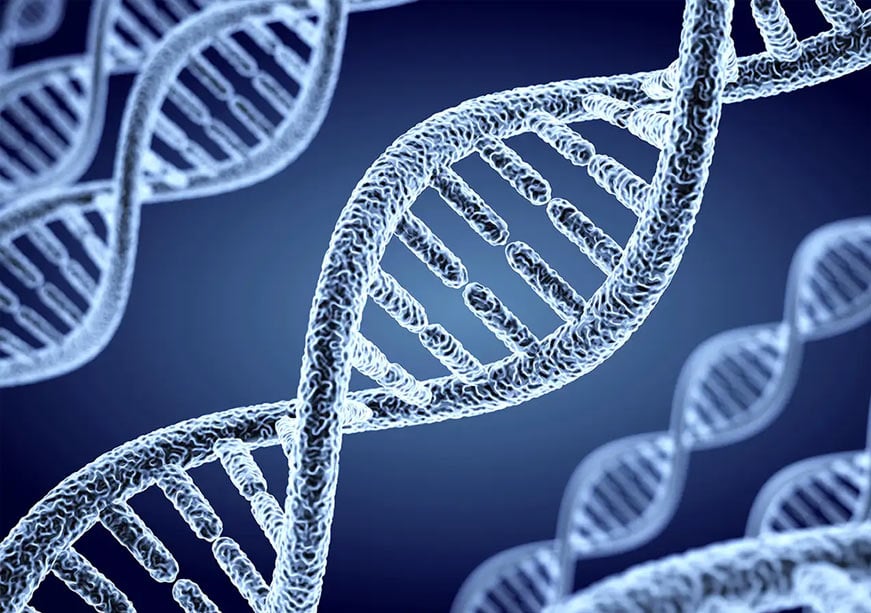In a pre-emptive move towards ensuring the responsible application of emerging biological sciences, scientists have urged caution in the development of a new—albeit hypothetical—form of life arising from research in mirror biology, without opposing its exploration altogether. While mirror molecules hold promising applications in drug development and plastic degradation, the creation of mirror organisms, such as mirror bacteria, raises serious concerns, since their implications for health and the environment—pathogenicity, toxicity, and ecological disruption—are unknown. Although the creation of mirror organisms is still decades away, the possibility of a breakthrough discovery that accelerates research and development remains. In this context, the scientific community has reached near-consensus. While research on mirror molecules is encouraged for their therapeutic and industrial potential, science policy should discourage efforts to create mirror organisms, emphasising the need to balance technological innovation with biosecurity and ethical safeguards.
While research on mirror molecules is encouraged for their therapeutic and industrial potential, science policy should discourage efforts to create mirror organisms, emphasising the need to balance technological innovation with biosecurity and ethical safeguards.
Chirality and Mirror Life
Chiral molecules are mirror images of each other, like left and right hands, and cannot be perfectly aligned (non-superimposable mirror images). This property, known as chirality or handedness, determines how biomolecules such as DNA, RNA, and proteins interact and function. For instance, the immune system’s ability to recognise and destroy pathogens relies on these chiral differences. All known life on Earth is homochiral, meaning that it uses only one type of handedness: DNA and RNA are made of right-handed nucleotides, while proteins are built from left-handed amino acids. Mirror biology is an emerging field that explores the creation and behaviour of mirror-image biological systems. It includes the study of mirror molecules—synthetic versions of natural biomolecules with opposite chirality—and the more speculative mirror organisms, which would be entirely new, self-replicating life forms built from these components.
Benefits and Potential Applications
Over the past couple of decades, advances in synthetic biology have enabled the construction of mirror versions of biological molecules. Scientists have synthesised mirror-image proteins, DNA and RNA molecules, and membrane-bound cell compartments. The development of these mirror molecules holds considerable potential for therapeutic and industrial applications. Mirror versions are relatively more resistant to degradation within the body, suggesting that when used as drugs, they could remain stable and active for longer in the body. Studies investigating mirror-image proteins, DNA, and RNA molecules as drug candidates for metabolic disorders, inflammatory diseases, cancer, and infectious diseases are already underway. Mirror-image molecules are being developed to detect proteins and metabolites for diagnostics, while mirror antimicrobial peptides are being explored to counter antimicrobial resistance (AMR).
Mirror biology is an emerging field that explores the creation and behaviour of mirror-image biological systems. It includes the study of mirror molecules—synthetic versions of natural biomolecules with opposite chirality—and the more speculative mirror organisms, which would be entirely new, self-replicating life forms built from these components.
From the industrial perspective, mirror image glucose, which is sweet but not metabolised by natural enzymes, is being studied as a non-caloric sweetener. To address plastic pollution, scientists have synthesised plastic-degrading enzymes, though they often break down in the environment. The synthesis of non-biodegradable mirror-image versions of such enzymes offers a potential solution. Thus, the development of mirror molecules holds considerable promise in therapeutics and industrial applications, particularly if production can be scaled efficiently and safely.
Research into mirror organisms—such as mirror bacteria—however, carries much greater risk. The synthesis of mirror bacteria is decades away, requiring substantial financial and technological investment. However, as researchers continue to assemble mirror-image cellular components and with advances in AI, it is increasingly plausible that a mirror-image self-replicating cell could be created—one that may behave unpredictably. A mirror bacterium could potentially evade the immune system of humans, animals, and plants, behave like a tumour cell and sequestrate oxygen, nutrients, and physical space within a host, and could even damage the environment if it escapes its natural predators and outcompetes other organisms for resources. These possibilities illustrate a crucial policy distinction: mirror molecules offer tangible benefits with manageable risks, whereas mirror organisms present profound uncertainties that could prove catastrophic.
The Global Scientific Response
Debate over mirror biology intensified in December 2024, when nearly 40 leading experts in synthetic biology, ecology, and immunology jointly published a Science Policy Forum article and a 299-page technical report. Collectively, they cautioned that the emergence of mirror organisms could introduce risks without historical precedent—threatening human health, biodiversity, and ecological stability.
In February 2025, scientists commemorated 50 years since the Asilomar Conference on recombinant DNA—a pioneering gathering that defined the first global norms for biosafety in biotechnology. Convened at Asilomar State Beach, California, in 1975, the conference produced guidelines that influenced the US National Institutes of Health’s regulatory framework for research on recombinant DNA technology and the biosafety level (BSL) system used worldwide. Echoing that spirit, scientists now urge for proactive guardrails on emerging life science technologies, including mirror biology.
Over the past year, deliberations have expanded globally, recognising mirror biology as a defining governance challenge for twenty-first century life sciences. Conferences and workshops were hosted by the University of Manchester, the US National Academies for Science, Engineering, and Medicine, Institut Pasteur with the Mirror Biology Dialogues Foundation (MBDF), the Nuclear Threat Initiative’s Biosecurity Innovation Risk Reduction Initiative (BIRRI), and the UK Government Office for Science.
As the twenty-first century unfolds as the ‘century of biology,’ research into mirror biology exemplifies the paradox of innovation and security. While scientific curiosity drives solutions to global challenges, the same technology also opens pathways to unprecedented risks. For instance, in contrast to other disruptive technologies such as gene editing, which modify existing organisms, mirror organisms represent a life form that does not exist naturally, and which can evade current biosurveillance measures and resist existing countermeasures.
Innovation and Security: A Dual-Use Paradox
As the twenty-first century unfolds as the ‘century of biology,’ research into mirror biology exemplifies the paradox of innovation and security. While scientific curiosity drives solutions to global challenges, the same technology also opens pathways to unprecedented risks. For instance, in contrast to other disruptive technologies such as gene editing, which modify existing organisms, mirror organisms represent a life form that does not exist naturally, and which can evade current biosurveillance measures and resist existing countermeasures.
Compounding this uncertainty is its dual-use potential. Tools and components of legitimate research could be repurposed by malicious actors, although the technical expertise and infrastructure required would render covert efforts even more challenging. Further, unlike most dual-use technologies, mirror organisms do not exist yet, presenting a unique opportunity to shape governance before the technology materialises.
Recommendations: Global Governance and Science Diplomacy
To ensure that mirror biology develops within a safe and responsible framework, a multi-layered governance strategy is essential. This will enable a shared understanding of risks, legal and institutional safeguards, and facilitate beneficial research, while preventing the creation of mirror organisms.
1. Clarifying the Scope of Mirror Biology
Firstly, the scientific community must foster a shared understanding of what constitutes mirror biology and clearly distinguish between the synthesis of mirror molecules and that of mirror organisms, both of which together constitute the emerging domain of mirror biology. This distinction is critical to enabling beneficial research whilst ensuring the responsible and ethical development of life sciences. A global moratorium on the creation of self-replicating mirror organisms could be implemented until thorough risk assessments are conducted. Such a pause would not halt scientific progress but would clarify the boundary between low-risk and high-risk studies under strict oversight.
2. Global Oversight Mechanisms
A legal and institutional regime to oversee mirror biology is equally necessary. Establishing an advisory committee under the aegis of the World Health Organization (WHO) or the United Nations (UN) could create a coordinated structure to evaluate research proposals and classify projects by risk. Existing multilateral mechanisms, including the Biological Weapons Convention (BWC), the Environmental Modification (ENMOD) Convention, and the Australia Group, could be leveraged to regulate the use and transfer of mirror biology technologies.
3. International Scientific Cooperation
As effective global governance relies on national implementation, countries should include mirror biology within their biosecurity and dual-use research oversight frameworks. Risk assessments should be conducted by funding agencies and review boards for relevant experiments. Identification barcodes or safety switches could be incorporated into experimental systems to minimise the impact of unintended release and enhance containment. Governments can use existing institutional mechanisms to coordinate policy with emerging global norms.
Embedding science diplomacy within mirror biology governance will be central to these efforts. Discussions on mirror biology should form part of diplomatic engagements to ensure early coordination between multilateral institutions and scientific experts. Science diplomacy can translate technical knowledge into policy legitimacy, build trust amongst nations, and mediate asymmetries in decision-making by including actors from the Global South.
4. Responsible Science Communication and Diplomacy
International forums convened under the WHO, the UN, or other multilateral bodies can bring together key stakeholders—scientists, industry bodies, civil society, science policy researchers, and government agencies—to deliberate the risks and opportunities of mirror biology. Such forums would also serve as platforms for science diplomacy, helping align technical consensus with political legitimacy. This would cultivate a shared global understanding of mirror biology-related research while ensuring transparency around funding sources, patents, commercial interests, and potential conflicts of interest.
Embedding science diplomacy within mirror biology governance will be central to these efforts. Discussions on mirror biology should form part of diplomatic engagements to ensure early coordination between multilateral institutions and scientific experts. Science diplomacy can translate technical knowledge into policy legitimacy, build trust amongst nations, and mediate asymmetries in decision-making by including actors from the Global South.
Finally, promoting responsible innovation requires vigilance against misinformation and disinformation. Scientists, policymakers, and the media must responsibly communicate mirror biology’s potential and risks accurately, avoiding both hype and alarmism. This will help sustain public trust while reinforcing the scientific and ethical boundaries of acceptable research.
A Pause Worth Taking
Mirror biology remains an emerging domain, yet it demands governance today. The scientific community has already begun to anticipate its risks, seeking to align innovation with precaution. As with recombinant DNA technology, responsibility must precede capability: mirror molecules may advance medicine and sustainability, but mirror organisms pose ecological and biosecurity threats of an unknown scale. Diplomatic engagement must therefore include mirror biology, ensuring this frontier science evolves under foresight instead of reaction—demonstrating that the governance of scientific innovations can be proactive, not solely responsive to their consequences.
This commentary originally appeared in Observer Research Foundation.












